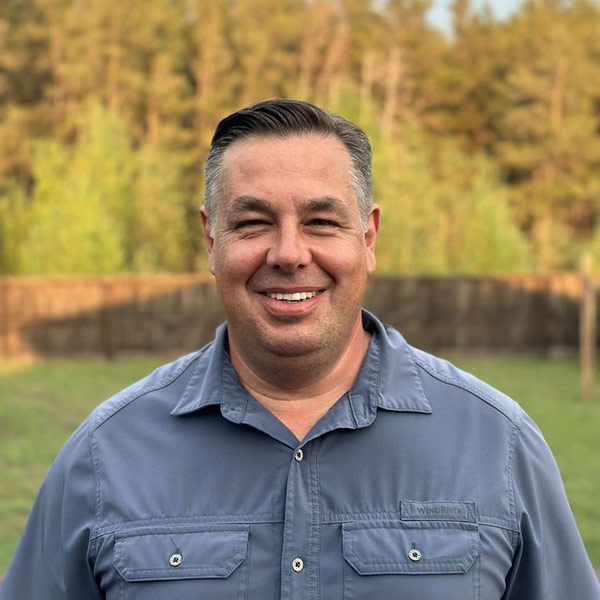James Tucker, research scientist, Agriculture and Agri-Food Canada


James Tucker is a research scientist in barley genomics at Agriculture and Agri-Food Canada’s (AAFC) Brandon Research and Development Centre (RDC). He completed a bachelor of science in chemistry and biology at the University of Winnipeg before spending a year in entomology at the University of Manitoba (U of M). He then moved to Montreal to do a master’s degree in quantitative genetics at Concordia University. He worked for a while before returning to studies later in his career to complete his PhD in plant science at the U of M. Tucker lives outside of CFB Shilo with his wife. He is the father of two children.
Where did you work before the Brandon RDC?
I started out as a summer student in the ’90s and worked my way up as a research technician in Winnipeg at the Cereal Research Centre before moving to Brandon in 2001. I worked as a biologist and then a barley pathologist, supporting the barley breeding program. In 2018, I was made into a research scientist at the centre. Aside from one summer working for the Canadian Forestry Service, my work experience has all been within AAFC.
What got you interested in this area of work?
Initially, it was employment. I was working in Winnipeg in entomology and molecular genetics as a technician and then took a job as a barley pathologist. I had an interest in genetics for a long time. In genetics there is a lot to work on and there are always new and complicated problems. What really grew on me was the community. Barley is an extremely co-operative research community and it’s been a really positive experience working within that community.
Tell us a bit about your work at the Brandon RDC.
The Developing barley germplasm with improved resistance to Fusarium head blight (FHB) and other biotic stresses for western Canada project is the major driver of my research. This project ran from 2018-23 and was funded under the National Barley Cluster.
I work closely with Ana Badea, a barley breeder here at the Brandon RDC, as well as the other barley breeders in Canada. There are a lot of diseases in barley making it quite complicated. We focus on the diseases that are of major economic concern and cause damage for farmers. This includes Fusarium head blight (FHB), stem rust, spot blotch and other biotic stresses that affect barley production.
In the spring, we work on experiments to get seed from Dr. Badea’s program to collaborators, for example – and receive seed from other institutions around the country and internationally – and set up studies and seeds for our disease nurseries (stem rust, leaf disease and FHB) here at the centre. Plots are grown and infected, followed by record-taking of disease ratings for thousands of plots. A big task in the fall is harvesting the FHB nursery. In barley, there is not a good relationship between the visuals and the toxins like wheat, so we need to harvest a lot more, and by hand. The work is labour intensive, where approximately 10,000 rows are harvested each year. Then during the winter, we are cleaning and processing the seeds, sending them for analyses in order to get all of the information back in time for the breeders to use to make their selections.
What can you say about the value of farmers providing funding and support to your organization?
In my view, a lot of the research I do is funded through farmers and their faith in giving me the funds I need to do the research that matters to them. In the research I do, I always focus on the benefits for farmers, which is very important to me. I really appreciate the funding support.
How does that farmer funding and support directly benefit farmers?
In my research program there are short-term and long-term goals. Some things take longer than others. Breeders have a big job. They have to breed for so many traits, while constantly trying to improve yields, so that farmers can benefit. I work with the breeders to help them select the best lines to advance depending on the trait they are targeting (e.g., resistance). This results in farmers getting new and improved varieties with better disease resistance packages, for example.
How do you spend your time outside of work?
I do a lot of gardening. I’ve been doing martial arts for most of my life, and I really enjoy being in nature going hiking or walking in the forest and riding ATVs.
How do you celebrate agriculture?
I have a good-sized garden. I love putting my hands in the soil, smelling the soil and growing things. It’s kind of like my Zen time. It’s pretty exciting that we get to put seeds in the ground and the sun provides the requirements to grow and produce food that we get to eat. I normally grow excess food and tell the neighbours it’s a “you pick” garden, so they can come and take what they like.
What is a good piece of advice you’ve received?
I’ve had a lot of mentors over the years, and some good advice I received is that research is a slow and steady game of increments over the years. There are really good days where you find something or a new discovery, but it’s slow working and it takes time, especially in FHB research. You have to gain an understanding that things don’t happen quickly and it takes time and resources to do research, but over time, you eventually achieve your goal.
Click here for more information about the Brandon RDC.
